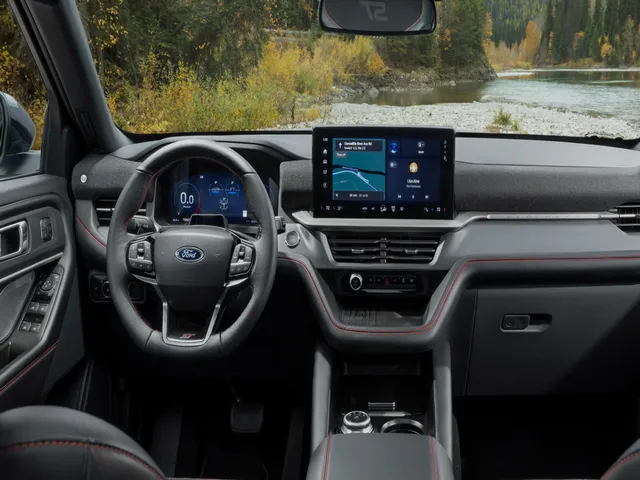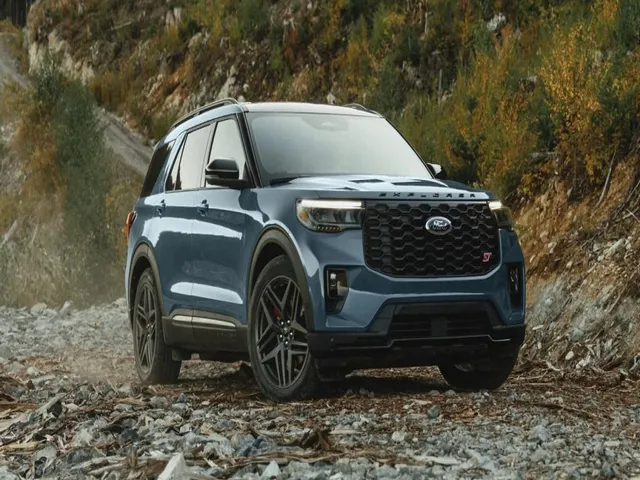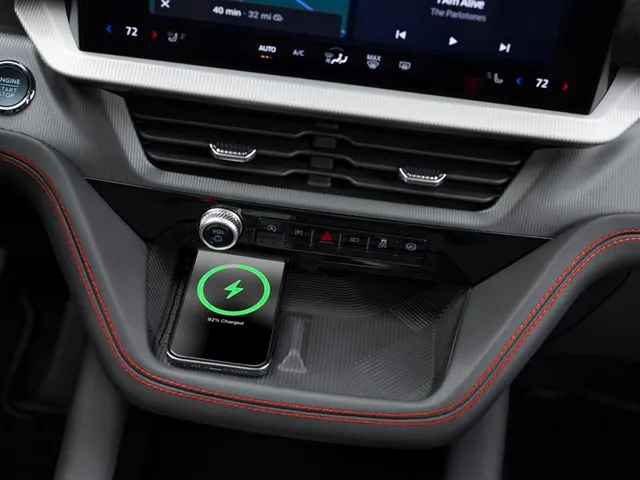The automotive industry has experienced seismic shifts in recent times. Where competition was once defined by powertrains and sheet metal alone, technology has transformed vehicle interiors into smart, connected zones. Access to apps, navigation and media now factor heavily into buyers’ decisions. As interfaces evolve, partnerships and standards also transition.
General Motors’ initially polarizing choice to forego popular integration standards in new EVs exemplified such change, yet left an opening. This article examines their bet, Ford’s response in the 2025 Explorer SUV and Lincoln Aviator crossover to welcome Android Automotive while maintaining legacy options, and how connectivity choices influence perceptions of innovation and satisfaction in increasingly software-defined vehicles.

GM’s announcement in early 2023 that it would fully replace Android Auto and Apple CarPlay with Android Automotive in models starting with the 2024 Chevrolet Blazer EV diverged noticeably from industry norms. While Google’s embedded platform grants control over the user experience, it also necessitated abandoning widely used consumer standards.
Customers more easily interacting with mobile devices in familiar ways voiced quick displeasure. Time will tell if their all-in gamble pays off, but standing alone in a move eliminating hundreds of thousands of combined apps left GM isolated initially from peer brands and potentially some buyers seeking seamless phone connection options.
By adopting Android Automotive, Ford gains seamless control of the user interface with regular updates driven by Google. Core vehicle functions and connected services are enhanced through more sophisticated software capabilities. Staying compatible with CarPlay and Auto also broadens appeal, addressing concerns over GM’s controversial choice.
Early adopters praise Ford’s balanced strategy versus the all-or-nothing approach. With the Explorer and Aviator establishing the new platform, it promises integration into other Ford and Lincoln models, yielding consistency while accommodating individual brands and segments. The strategic flexibility reinforces Ford’s leadership adapting emerging technologies.

Android Automotive empowers immersive digital experiences through large high-resolution displays and integrated services. On-board and cloud-based processing deliver fluid in-cabin experiences like Google Maps with vehicle details and responsive voice interaction. Automakers gain frequent updates and deeper mobile device connections.
The operating system also facilitates additional functions through secured SDK access and the Google Play store ecosystem. For drivers, personal profiles and wireless projection bring technology seamlessly into each journey. When paired with automotive-grade hardware, the software enables the innovations drivers associate with consumer electronics.
By combining Android Automotive and the mainstream phone mirroring standards, Ford addresses concerns over losing compatibility. Customers dissatisfied with GM’s decision gain a clear alternative welcoming traditional integration. Those seeking the latest connected platform can also enjoy it.
Positive feedback for the Explorer suggests the balanced approach attracts both groups. Maintaining choice minimizes disruption and satisfies varying technology preferences. Early sales success may surpass what GM achieves restricting options. It positions Ford to benefit as others similarly adopt Android operating systems while retaining established options.
At the core of Ford’s revamped interface is Android Automotive, bringing its built-in capabilities and growth potential. Structured around Google services, it streamlines software and service updates from a trusted partner. Applications and vehicle functions are unified around consistent branding.

For future features, the embedded architecture lays foundations for transformative innovations like advanced AI and cloud-hosted personalization. Ford redesigned the in-cabin experience through strategic selection of the modern platform while preserving standards through additional integration. The synergy lifts the brand’s stature as an adaptive pioneer.
Both Google and Apple’s systems grant automakers modern software platforms, but differentiated focuses. Android Automotive as an embedded OS controls core functions while CarPlay remains smartphone-centric. The former enables seamless integration of services and vehicles’ digital ecosystems.
Apple’s updated software broadens its appeal with a new version debuting on Aston Martin and Porsche, expanding gauge cluster projection. Still phone-powered, it maintains familiar iOS-based interfaces and vast app selection. Both offer connectivity standards but Automotive’s broader scope empowers more sophisticated digital experiences tailored for automotive needs.
As connected vehicle capabilities rise in importance, infotainment choices directly impact buying decisions. Satisfying interface options strengthen emotional ties to a brand and reduce likelihood of switching when upgrading. Ford gains through balancing tech preferences with its flexible strategy.
Dissatisfaction over GM’s limitations could stimulate higher consideration of alternatives like the Explorer for some customers. Strong partner selections from Ford and seamlessness retaining standards safeguards satisfaction. Early positive reception bodes well for retention and attracting new demographics prioritizing advanced digital conveniences.

Continuing processor and software innovations will hasten personalization. Voice assistants incorporating AI and vehicle integrations advance functionality seamlessly across lifestyles. Vehicles become even smarter ecosystem hubs leveraging 5G and edge computing. Digital services broaden as automakers form new alliances.
Immersion increases through AR/VR and novel display technologies. Emphasis shifts from standalone infotainment to distributed experiences throughout intelligent cabins. Greater over-the-air update capabilities stimulate frequent enhancements maximizing value across ownership. New competitive arenas emerge emphasizing seamless user experiences.
Ford deftly balances technological leadership and usability. Striking the right chord between disruptive advancement and satisfaction resonates with riders. The Explorer establishes their deft handling of emerging software, demonstrated in transitioning long-standing models. With Android underpinning consistent yet brand-differentiated digital personalities, doors open to revolutionary ideas.
Early Explorer buyers already enjoy boons of the platform through masterful execution of interfaces streamlining inherent complexities. The accomplishment bodes well for future models enhancing journeys globally as Ford ceaselessly modernizes yet retains simplicity greatly valued by diverse clienteles.


